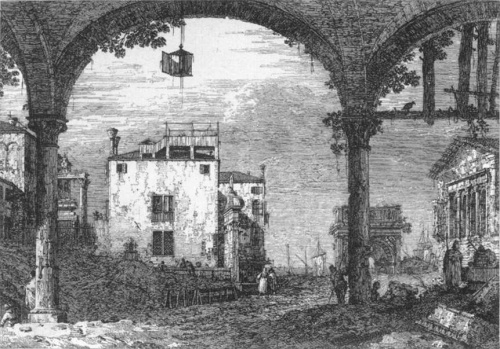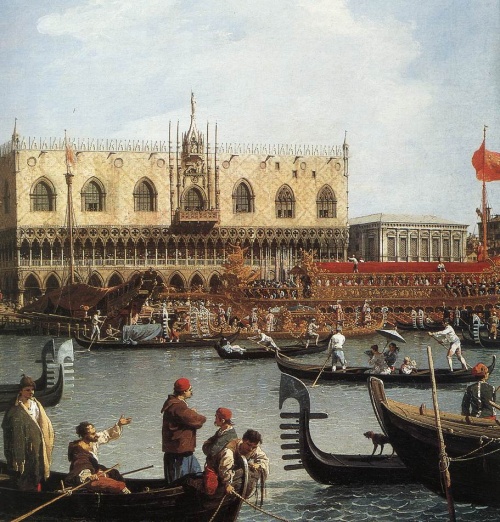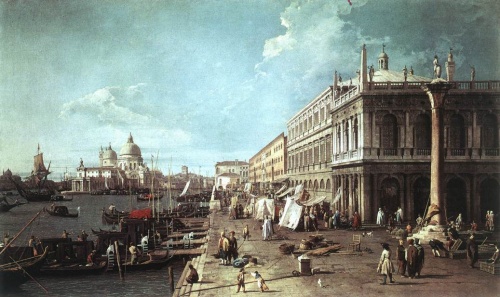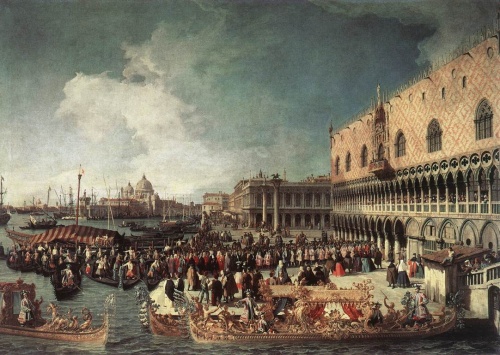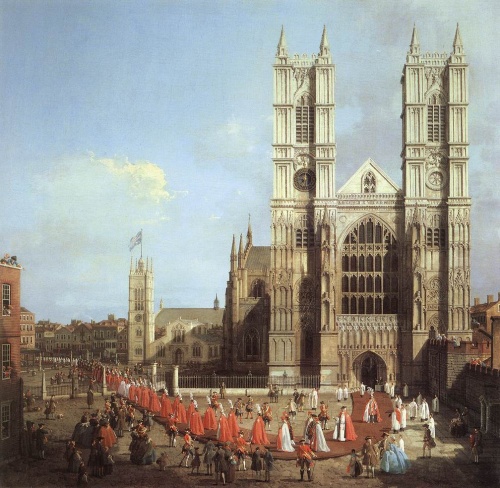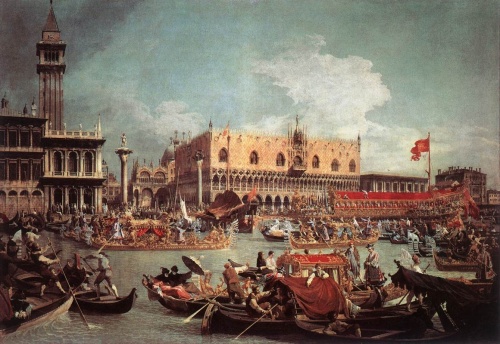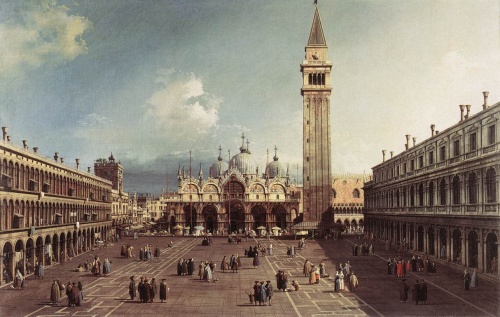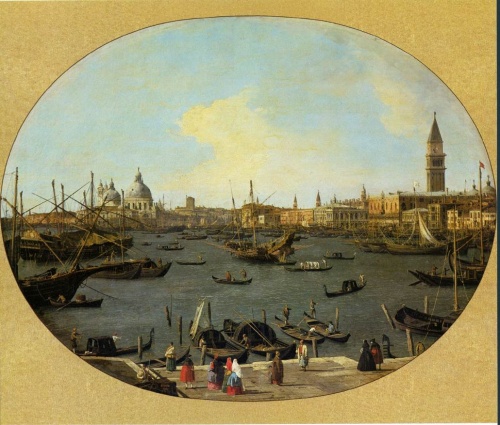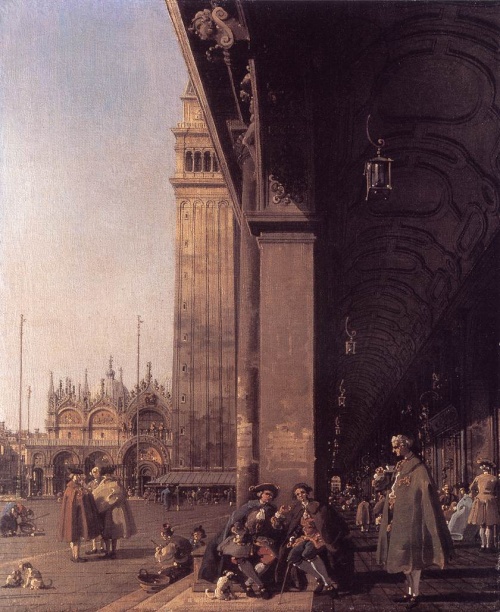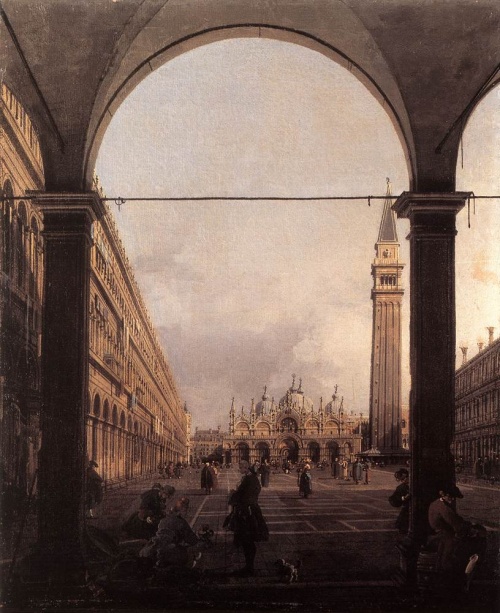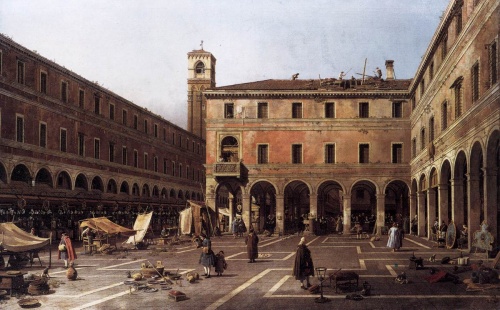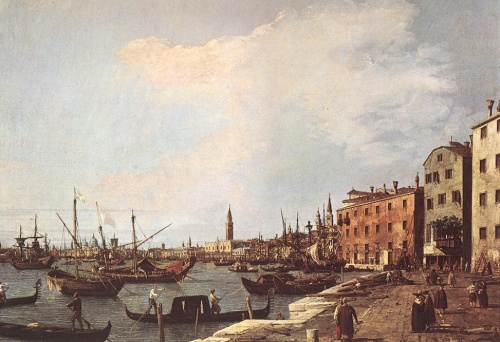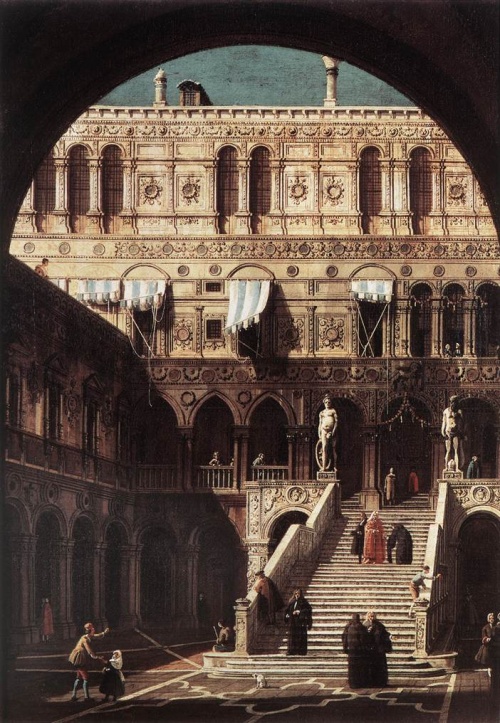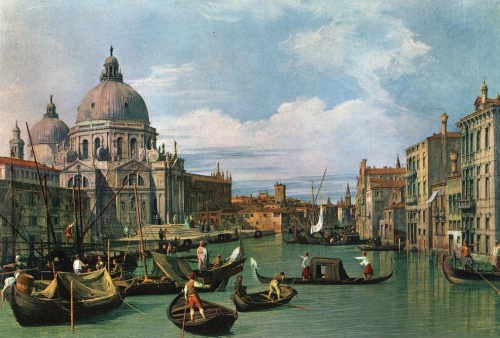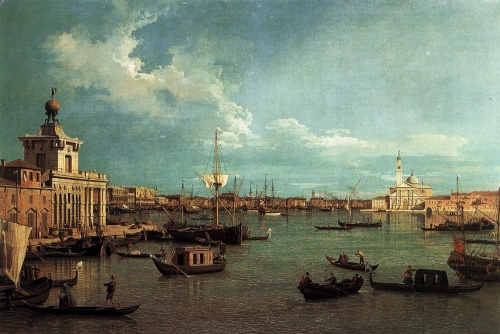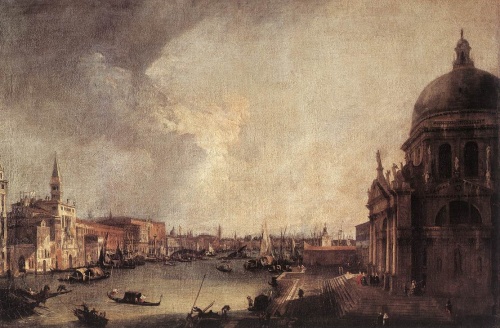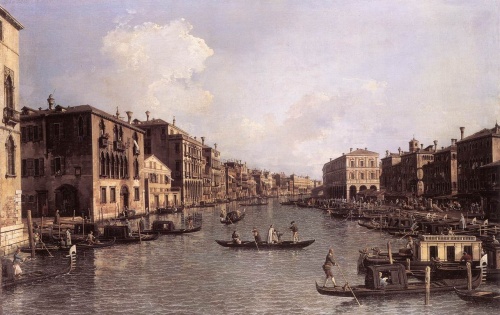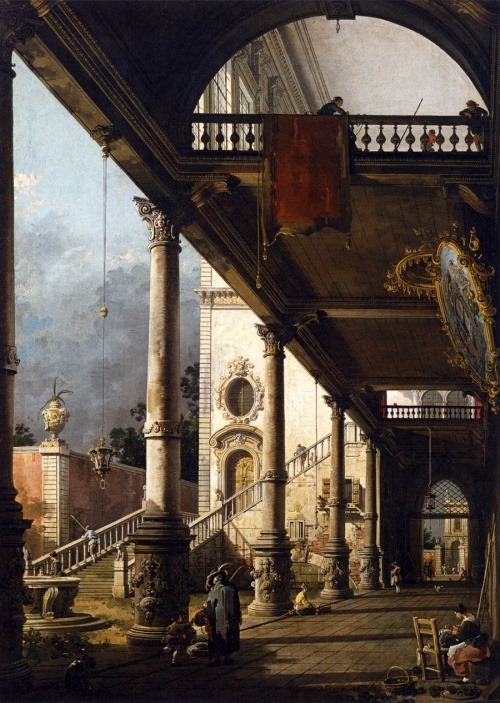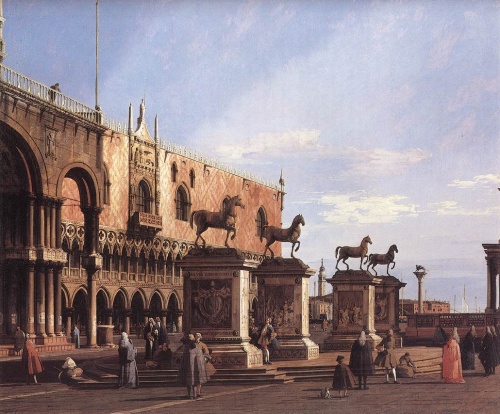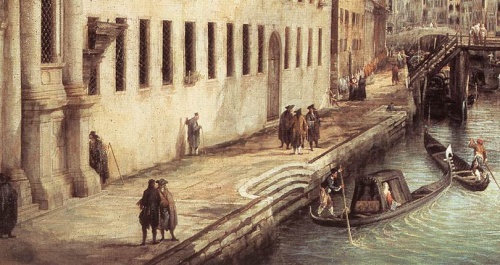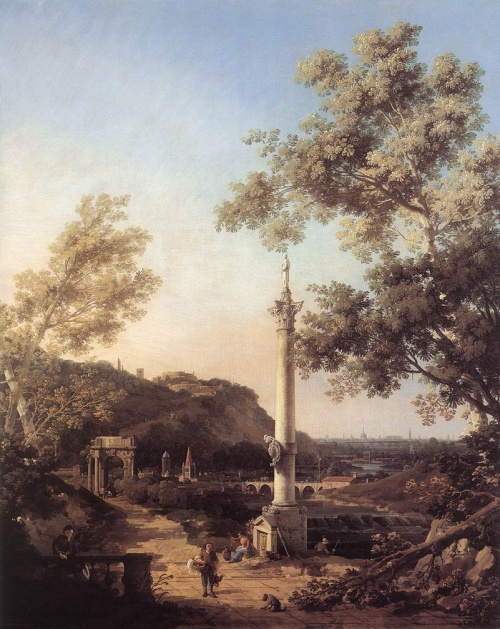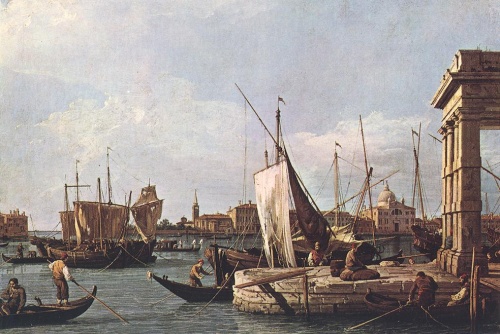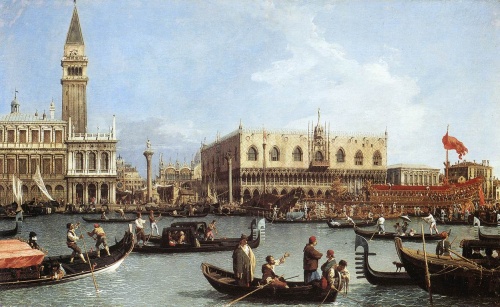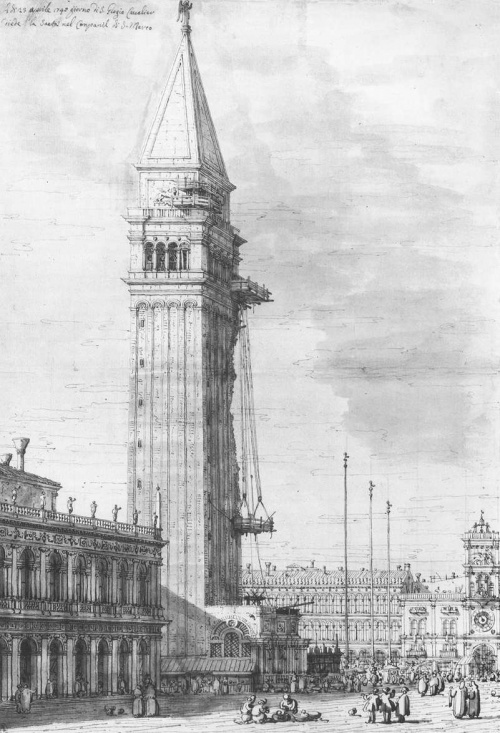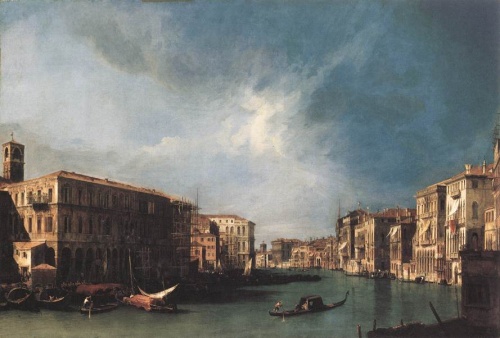Canaletto (145 works)
Разрешение картинок от 810x430px до 4096x2379px
In Rome and Venice. 1719-1746
Canaletto studied (he received his nickname because of his father’s surname - “Little Canal”) from his father, theater decorator Bernardo Canal. Worked in Rome (1719-1720 and possibly in the 1740s), in Venice. He began as a stage designer, helping his father in designing performances for Venetian and Roman theaters. Under the influence of G. Van Wittel and L. Karlevaris, who worked in Rome, he turned to painting city views. Perhaps he knew the vedata of J.P. Pannini and V. Codazzi depicting Roman ancient buildings. Canaletto used sketches from life made during his stay in Rome in capricci of the Roman period - “The Arch of Septimius Severus” (1719, private collection), “Capricci with Ruins” (1720-1721, Venice, Cini Foundation). With large patches of dark and light tones, he follows the distribution of light and shadow in the early capriccios. The compositions are built on the principle of angular perspective and the view of powerful buildings, often depicted by the sea, opens from a side viewpoint.
From 1723 he worked in Venice, becoming a member of the Guild of Venetian painters. In the vedutes of the 1730s. Canaletto abandons the principle of constructing an illusory perspective space, mastering new techniques, and connecting pictorial searches with them. Using a camera obscura, he captures the angle of the chosen, usually wide, panoramic view (the artist’s camera is kept in the Correr Museum), clearly builds the space, as if bringing it closer to the viewer. Topographical accuracy is always combined in his works with a decorative perception of color, somewhat elevated above reality, with which he conveys the colorful and festive atmosphere of Venice. In the 1730s. The artist gained fame in connection with the series he executed for the English consul Joseph Smith and the Duke of Bedford. During these same years, he began to publish etchings from his works, which brought him pan-European fame. In the vedutes dedicated to the festivities in honor of the Doge - “Reception of the French ambassador at the Doge’s Palace” (1729, St. Petersburg, Hermitage), “Departure of the Doge’s “Bucentaur” from the pier on Ascension Day” (1735-1741, London, National Gallery) , scenes of crowded celebrations are conveyed. Canaletto always meticulously records all the details of a historical event.
The polychromy of canvases depicting festive Venice on days of celebrations associated with the Doge's visits, receptions of ambassadors, and holidays in honor of saints is replaced by a more muted palette in paintings that depict the everyday life of the city. The landscapes “Marblemakers’ Workshop in San Vitale” (1730, London, National Gallery) and “Rio dei Mendicanti” (1730s, Milan, private collection) are executed with fine, precise brush strokes (“tocco forte”), they do not have the intense dynamics of large colors spots, as in early Roman capriccios. In accordance with the perspective tasks, Canaletto varies the strength of tone, conveying increasingly differentiated gradations of light and shadow, softening the geometric clarity of plans, volumes of buildings, leading to a single tonal sound of the color of the sky, water, architecture, and costumes.
Like poetic memories of Venice, Canaletto’s canvases always come back to mind with the reproduction of the most picturesque sections of the city with the church of Santa Maria della Salute and the island of San Giorgio with the Palladio church of San Giorgio Maggiore (“Entering the Grand Canal.” 1745, Washington, National Gallery; “Bacino di San Marco". 1745, Boston, Museum of Art).
Simultaneously with the vedutes in the 1730-40s. Canaletto also wrote capricci. Venetian and Roman buildings, often combined in one form, look like a grandiose theatrical set (“The Colosseum with the Arch of Constantine.” 1743, Hampton Court, royal collections; “Capriccio with the Venetian Church of San Francesco della Vigna,” 1744, private collection).
English period. 1746-1756
During the periods 1746-50 and 1751-56, Canaletto worked in England. The years spent there were very fruitful in his work. He even painted a self-portrait here, depicting himself against the backdrop of St. Paul's Cathedral. The oval shape of the canvas likens it to a window from which the artist looks at London views. In England, Canaletto painted vedas of the Thames basin with palaces (“Thames from Westminster Bridge”, 1746-47, Prague, National Gallery), medieval cathedrals and chapels (“Eton Chapel”, 1754, London, National Gallery), scenes of crowded gatherings at Thames (“Feast on the Thames”, private collection), reminiscent of Venetian works. He strove to truthfully convey through the means of tonal color the character of the northern landscape, not as festive and bright as the Italian one, but attracting the artist with its natural beauty. He was attracted to painting English parks with their endless spatial perspective and neo-Palladian pavilions lost in their greenery.
Final period. 1756-1768
Upon his return to Venice in 1756, Canaletto mainly repeated the old capricci plots, without creating any more works of artistic quality equal to his earlier canvases. He works for publishers, executing drawings for series of specific engravings, himselfuses the etching technique, which he turned to in the early 1740s. In 1763, the sixty-year-old artist was accepted as a member of the Academy only after European recognition. Paying tribute to the talent of this major Venetian landscape painter, his contemporary, Abbot Moschini, wrote on the artist’s tombstone: “Antonio Canal, Venetian vedutist painter, to whom few of his elders and none of his contemporaries could approach in intelligence, taste and truthfulness.” .
